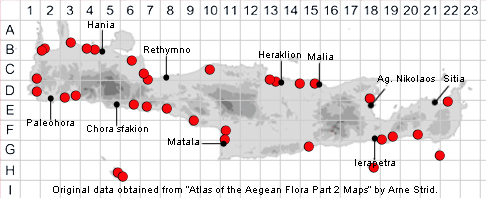SPECIES DESCRIPTION
EUPHORBIA PEPLIS
Family and Genus:- See- EUPHORBIACEAE/ Subgen. CHAMAESYCE
Common Names:- Purple spurge
Homotypic Synonyms:- Anisophyllum peplis, Chamaesyce peplis, Tithymalus
peplis.
Meaning:- Euphorbia (L) For Euphorbus, physician to the King of Mauritania.
Peplis (Gr) A name used by the Greek physician and botanist
Dioscorides for Mediterranean coastal spurge.
General description:- Procumbent, somewhat fleshy, glabrous, annual.
Stems:-
1) Up to 40 cm. Usually with 4 branches from the base.
Leaves:-
1) (4-)5-11(-16) x 2·5-5(-10) mm, falcate-oblong, obtuse or emarginate, entire, base
truncate.
2) Petiole, 2-3 mm.
3) Stipules, 1·5 mm, subulate.
Flowers:-
1) Greenish, with semicircular, reddish-brown glands, lateral or clustered, not borne
in umbels.
Fruit:-
1) Capsule, (3-)3·5-4(-4·5) x 4-5 mm, sulcate, nearly smooth, purplish.
2) Seeds, 3 mm, ovoid-pyriform, smooth, pale grey, occasionally brown-mottled.
Key features:-
1) Leaves, ovate or falcate-oblong.
2) Seeds, 3 mm.
Habitat:- A typical species of maritime sand. 0-20 m. with Calystegia soldanella,
Eryngium maritimum, etc.
Distribution:- Sandy sea-shores, rarely inland. Coasts of S. & W. Europe,
northwards to S.W. England. On Crete fairly common around coastal areas.
Flowering time:- May-July
Photos by:- Fotis Samaritakis
